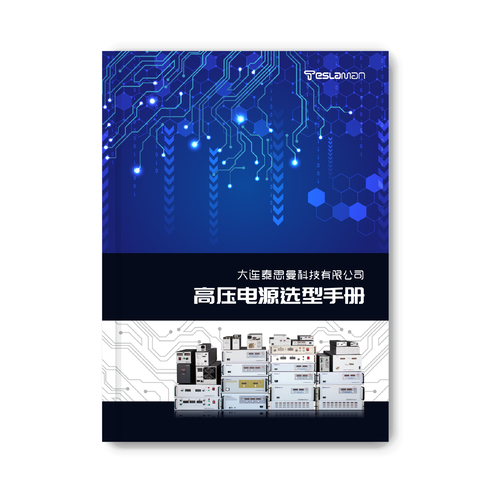Resonant Modes of High-Voltage Power Supplies for Semiconductor Testing: Principles, Applications and Advantages
I. Introduction
In the field of semiconductor testing, high-voltage power supplies play an extremely crucial role. They provide stable and precise high-voltage excitation for the testing of semiconductor devices to ensure that the quality and performance of semiconductor products meet the requirements. Among them, the resonant mode, as an advanced technical means, demonstrates unique advantages and importance in the application of high-voltage power supplies.
II. Principles of the Resonant Modes of High-Voltage Power Supplies for Semiconductor Testing
The resonant mode of high-voltage power supplies for semiconductor testing is based on the principles of resonant circuits. A resonant circuit is composed of elements such as inductors (L), capacitors (C) and resistors (R). At a specific frequency, the inductive reactance of the inductor and the capacitive reactance of the capacitor cancel each other out, making the circuit exhibit a purely resistive property, and at this time, the circuit resonates. For high-voltage power supplies, by carefully designing the parameters of the resonant circuit, such as the inductance value and the capacitance value, the resonant frequency can be determined. When the operating frequency of the power supply approaches or equals the resonant frequency, the energy in the circuit can be efficiently exchanged between the inductor and the capacitor, reducing the energy loss on the resistor and thus improving the efficiency of the power supply. For example, in a typical series resonant circuit, the input voltage is applied to the loop where the inductor, the capacitor and the load are connected in series. Under the resonant state, a relatively high voltage gain can be obtained on the load, which is conducive to generating the high-voltage output required for semiconductor testing.
III. Applications of the Resonant Mode in Semiconductor Testing
(I) Testing of Capacitive Loads
In semiconductor devices, many chips have capacitive structures inside, such as capacitive sensors and storage units. High-voltage power supplies in the resonant mode can well meet the testing requirements of capacitive loads. Due to the good matching characteristics of the circuit with capacitive loads during resonance, the power supply can output high voltage while maintaining a stable current output, avoiding voltage fluctuations and instability caused by the charging and discharging processes of the load capacitor, thus accurately testing the electrical performance parameters of capacitive semiconductor devices, such as capacitance values and leakage currents.
(II) High-Voltage Pulse Testing
In some reliability and functional tests of semiconductor devices, high-voltage pulse signals need to be applied. High-voltage power supplies in the resonant mode can generate high-voltage pulses by controlling the on and off of switching elements. Utilizing the charging and discharging characteristics of the energy storage elements (inductors and capacitors) in the resonant circuit, high-voltage pulses can be quickly established and released, with steep rising and falling edges, and the pulse width and amplitude can be precisely controlled. This is of great significance for testing the response characteristics and breakdown voltages of semiconductor devices under the impact of high-voltage pulses, which helps to screen out semiconductor products that may have potential problems in practical applications.
IV. Advantages of the Resonant Mode
(I) High Efficiency
As mentioned above, the energy loss of the power supply in the resonant mode is mainly concentrated on the resistors in the circuit. Since the energy exchange efficiency between the inductor and the capacitor is high during resonance and the resistance loss is relatively small, compared with high-voltage power supplies in non-resonant modes, the overall efficiency of power supplies in the resonant mode is significantly improved. This not only reduces energy consumption but also, for large-scale semiconductor testing production lines, reduces the heat dissipation requirements and the complexity and cost of the system.
(II) High Stability
The characteristics of the resonant circuit make the power supply output have good stability near the resonant frequency. For semiconductor testing, a stable high-voltage output is of vital importance, which can ensure the accuracy and repeatability of test results. Even when the load changes to some extent or there are fluctuations in the input voltage, high-voltage power supplies in the resonant mode can still maintain a relatively stable high-voltage output, reducing test errors caused by power supply fluctuations and improving the reliability of testing.
(III) Potential for Miniaturization
Since the resonant mode can improve efficiency, under the same power output requirements, the heat dissipation requirements inside the power supply are reduced, which makes it possible for the miniaturization design of the power supply. The smaller volume enables the high-voltage power supply to have a higher integration degree in semiconductor testing equipment, which is conducive to building compact and multi-functional testing systems and is also convenient for the installation, maintenance and movement of the equipment.
V. Conclusion
The resonant mode of high-voltage power supplies for semiconductor testing, based on its unique principles, has a wide range of important applications in many aspects of semiconductor testing. Its advantages such as high efficiency, high stability and potential for miniaturization make it an indispensable part of modern semiconductor testing technology. With the continuous development of semiconductor technology, the performance requirements for high-voltage power supplies will continue to increase. The application of the resonant mode in high-voltage power supplies is expected to be further deepened and expanded, providing stronger support for the quality control and technological innovation of the semiconductor industry.




















